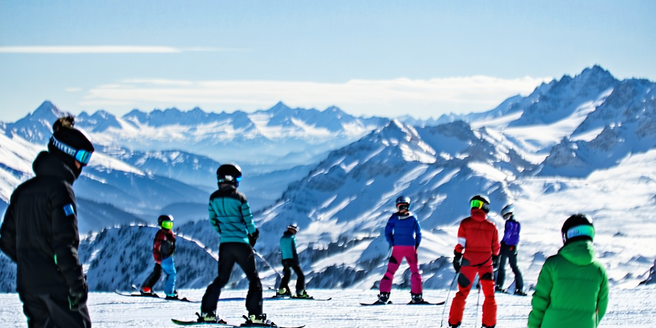
Choosing the Right Base Layers for Warmth
Base layers are crucial for warmth and comfort during mountain snow sports. They serve as the foundation for your clothing system, trapping heat and wicking moisture away from the skin. The ideal base layer should be snug yet flexible, allowing full range of motion without bunching or restricting movement. Fabrics like merino wool and synthetic blends are popular choices due to their effective moisture management properties. Merino wool is naturally insulating and odor-resistant, while synthetics tend to dry faster. Avoid cotton as it retains moisture, leading to heat loss. Selecting the right weight is also essential—lightweight for high activity levels, and midweight for cooler temps. In colder conditions, a heavyweight layer may be necessary. A high-quality base layer also reduces friction, preventing chafing as you navigate the snowy terrains.
Insulating Layers: Balancing Warmth and Breathability
The key to optimizing your performance on the slopes is mastering the art of layering, particularly with insulating layers. Insulating layers are essential for retaining body heat while permitting adequate airflow to avoid overheating, which is crucial during strenuous activities. Fleece, down, and synthetic materials each offer unique advantages. Fleece is lightweight and breathable, making it an excellent option for moderate conditions. Down offers superior warmth-to-weight ratio, but its effectiveness decreases when wet, so it is best in dry conditions. Synthetic insulation provides a good balance, maintaining warmth even when damp. It’s important to consider the day’s forecast and your activity level when choosing your insulating layer. Versatile options include jackets with ventilation zippers and hoods, allowing for adaptable layering systems to keep comfort levels optimized.
Outerwear Options: Weatherproof and Durable Choices
Your outerwear acts as the first line of defense against harsh mountain weather, making the right choice crucial for comfort and protection. When selecting outerwear, focus on materials that offer both weatherproofing and durability. Gore-Tex is a well-known material that provides reliable waterproofing while allowing moisture to escape, preventing overheating. Alternatively, cheaper options can also offer adequate protection if investment in high-end gear isn’t feasible. Look for a jacket with features like sealed seams, adjustable cuffs, and snow skirts to keep snow and cold air from entering. Additionally, consider wear-resistance as rugged terrains can take a toll on your gear. Jackets and pants with reinforced patches are a good investment for longevity. With the right outerwear, you not only enhance your performance but ensure sustained comfort throughout your snowy adventures.
Essential Accessories: Gloves, Hats, and More
Accessories play an integral role in keeping you warm and functional while indulging in mountain snow sports. Proper gloves or mittens are essential to prevent frostbite and maintain hand dexterity. Opt for insulated, weather-resistant gloves with grip enhancements for handling equipment. Hats or beanies under helmets help retain heat, as a significant amount of body heat escapes from the head. For enhanced warmth, a neck gaiter or balaclava can shield your face against biting winds. Additionally, don’t overlook the importance of goggles. They protect your eyes from UV rays and snow glare. Always carry a spare pair of socks to swap out if yours get wet during the day. These accessories are crucial safety and comfort enhancers helping you navigate varied conditions without compromising on safety and performance.
Footwear for Snow Sports: Staying Warm and Secure
The right footwear ensures your comfort and safety while participating in snow sports. Boots should be both warm and supportive, providing stability on icy, uneven terrains. Look for options with insulation, as well as waterproof or water-resistant materials. Boots lined with Thinsulate or similar materials will offer better thermal protection. A sturdy sole with adequate grip is crucial to prevent slipping on slick surfaces, and reinforced toes and heels add both protection and longevity. It’s also advisable to break in boots before hitting the trails to avoid blisters. Opt for boots with adjustable lacing or fastening systems for a snug, customizable fit. Keep in mind, well-maintained boots will not only enhance your experience but ensure your adventures continue comfortably and safely in snowy surroundings.
